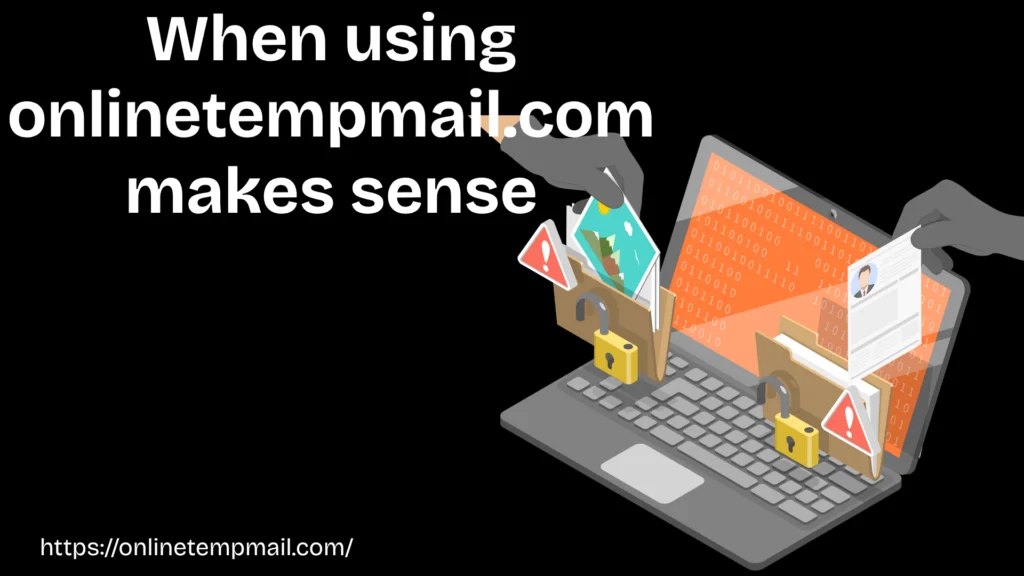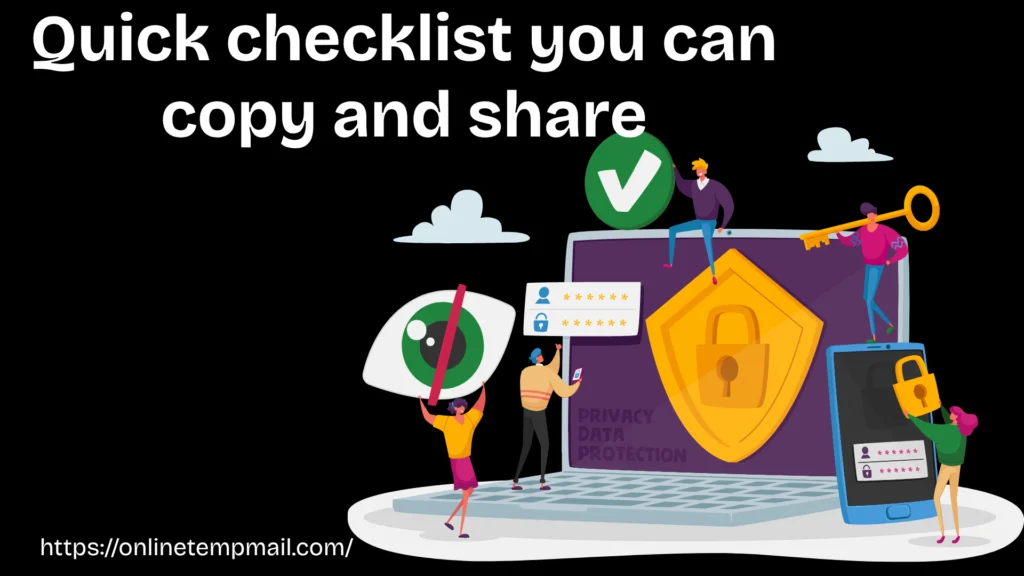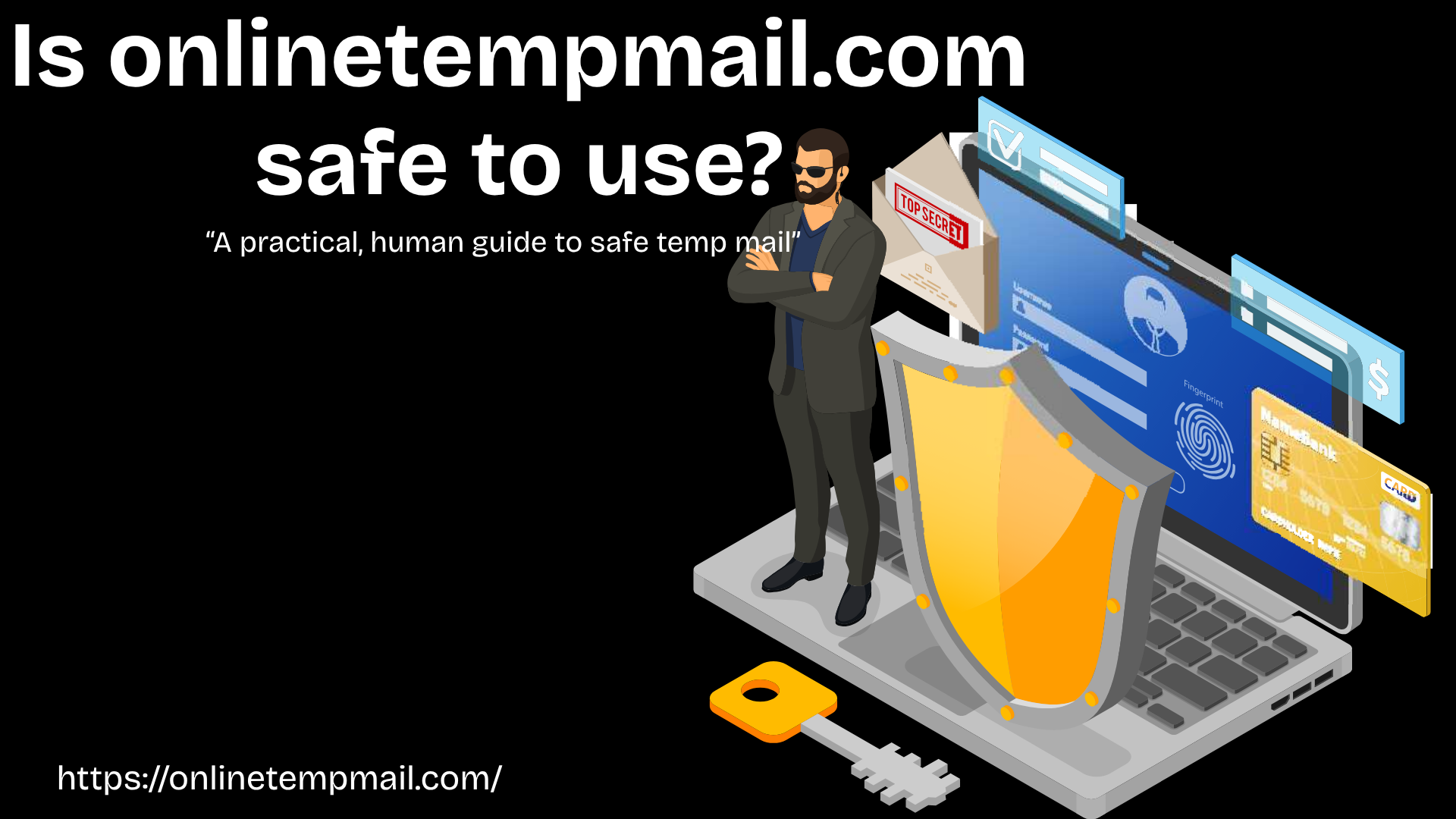Temporary email services, often called temp mail, disposable mail, burner email, or 10 minute mail, are everywhere. They promise one thing: an address you can use for a short time so your real inbox doesn’t get spammed. That sounds great in theory. But convenience has costs. This guide takes a clear, practical look at how temporary email works, the kinds of risks involved, and how to use a service like onlinetempmail.com responsibly.
If you want the short version: use onlinetempmail.com for throwaway signups and testing, but never for anything that matters. Keep reading for the details, the safe checklist, and better alternatives when you need both privacy and control.
What a “temporary email” actually is (plain language)
A temporary email provider gives you an address that exists for a short time. You paste that address where a site asks for your email, then check the temporary inbox through the provider’s website. After a short window, the messages vanish or the address becomes inactive.
This setup is great when you need a one time confirmation link or a promo code and don’t want newsletters hitting your primary mailbox. But it also means you don’t own the address. You can’t reset passwords, and you often don’t control who else can read the inbox. Those facts matter. Understanding them is the key to using temp mail safely.
How disposable email systems typically work
To judge safety, it helps to know the mechanics:
- A temp mail provider maps a generated address to an inbox held on their servers. You view messages in the provider’s web interface.
- Many temp mailboxes are public or easy to guess. If someone knows the address or can discover it, they can read the mail.
- Messages are usually stored server side for a short time and then deleted. That ephemeral nature is useful for privacy minded signups, but it means you can’t rely on those messages later.
- Providers may log metadata such as your IP address, timestamps, and message headers. Logging practices vary and are not always transparent.
- Because disposable addresses are often abused, many mainstream sites block them. Deliverability can be inconsistent: some sites accept them, some reject them.
Those points explain why disposable mail is fit for throwaway tasks and why it’s a bad idea for anything that needs durability or confidentiality.
The main risks of using onlinetempmail.com or any disposable mail provider
Below are the practical hazards you should weigh before using a throwaway address.
1. Account recovery and lockout risk
If you register an account with a site using a disposable address, the password reset emails will go to that temporary inbox. If the inbox expires or is public, you risk losing access. That’s the most common real world problem: people sign up quickly and later discover they cannot recover the account because their “email” no longer works.
2. Public or guessable inboxes
Many providers expose mailboxes at predictable or guessable URLs. If an inbox is public or easy to find, anyone, including malicious actors, can view messages. Treat a disposable inbox as potentially public unless the provider explicitly offers and documents a private mode.
3. Unclear logging and retention
Small or free services don’t always publish clear data retention or logging policies. You may think you’re anonymous, but the provider could be keeping metadata (IP addresses, timestamps, headers) that compromises privacy. If the provider’s policy is vague or missing, assume some logs exist.
4. Malware and phishing exposure
Disposable inboxes receive whatever is sent to them. Attackers can send phishing messages or malicious attachments to disposable addresses just as they can to normal inboxes. Because disposable addresses are often used in low friction signups, they sometimes get targeted by mass phishing campaigns. Treat every link and attachment as untrusted.
5. Blocking and deliverability problems
Services that want to prevent fraud and spam often block known disposable domains. That means your temp address may be accepted by small sites but rejected by larger sites (banks, payment processors, some social networks). Blocking can make the address unreliable for certain tasks.
6. Reputation and operational risk of the provider
Not all disposable mail services are operated professionally. Some change domains frequently, some have inconsistent uptime, and some have little contact or legal information. If a provider disappears or rotates domains, any messages you expected may vanish, and you lose the record entirely.

When using onlinetempmail.com makes sense (good use cases)
There are legitimate, low risk uses for disposable email addresses. Use them for:
- Grabbing a single use promo code or free download behind a signup wall.
- Testing a signup flow during web development.
- Signing up for a one off online comment or trial where you won’t need to log back in.
- Avoid marketing emails when you don’t want to share your main address.
These are safe because you don’t expect to need ongoing access or to receive sensitive information.
When disposable email is a terrible idea (bad use cases)
Never use disposable email for:
- Banking, payments, or any financial account.
- Social media or email accounts where you need password recovery.
- Government, health, or employer portals that require identity verification or delivery of important documents.
- Any account where you may need receipts, statements, or long term notifications.
Using throwaway addresses here risks account loss, fraud, or being locked out when you need access most.
Practical steps to use onlinetempmail.com as safely as possible
If you choose to use onlinetempmail.com (or another disposable service), follow these practical rules:
- Only use it for low value, single use tasks. That’s the whole point.
- Never put account recovery or two factor codes there. Those belong on accounts you control.
- Assume the inbox could be public. Don’t send or expect private documents, passwords, or personal data.
- Prefer long, random addresses if the service allows them. Predictable addresses are easy for others to find.
- Avoid attachments and suspicious links. If you must open something, use a safe environment (a sandbox or virtual machine).
- Check the provider’s stated retention and logging rules. If the policy is missing or vague, be extra cautious.
- Use a controlled secondary email or alias for anything you might revisit. This gives privacy without sacrificing recoverability.
Following these steps reduces the chances that a temp mail choice becomes a problem later.
Safer alternatives to disposable email
If your goal is privacy without losing control, consider these options:
- Dedicated secondary inbox you control. Create a secondary account with a mainstream provider or a privacy focused provider and use it for untrusted signups. You keep ownership, can recover accounts, and still keep junk out of your main inbox.
- Email aliasing or masking services. Many services allow you to create aliases that forward to your real account. You can disable an alias if it is abused. This offers both privacy and the ability to receive password resets and other important messages.
- Reputable privacy first email providers. Some providers offer strong privacy promises and features like disposable aliases or link tracking prevention. They can be a middle ground between ephemeral mail and your primary account.
These alternatives preserve the recoverability and control you lose when using ephemeral addresses.
Real world examples that illustrate the risks
- Someone signs up for a freelance platform with a temporary email, wins a job, and then cannot receive payment notices because the email has expired. The platform uses email for payment verification, and the worker loses access to their account.
- A developer tests signups with disposable addresses, but the QA logs are incomplete because the provider rotated domains and wiped the inboxes. The team cannot reproduce user reported issues.
- A user receives a verification email at a disposable address and later needs to reset a password. The reset email goes to the same temporary inbox, which was deleted, and the user cannot regain access.
All of these are typical scenarios that show why temp mail should only be used for throwaway interactions.

Quick checklist you can copy and share
- Use temp mail only for one time signups and low value tasks.
- Don’t use it for account recovery or anything financial.
- Treat messages as potentially public.
- Prefer services that let you create long, hard to guess addresses.
- Check the provider’s privacy policy and retention window.
- Consider an email alias service or a secondary account you control for anything you might revisit.
This checklist helps readers make quick, safer decisions in real situations.
Frequently asked questions (FAQ)
Will using a disposable email stop spam to my primary inbox?
Yes, for one off signups, it can keep marketing and trackers out of your main email. But some sites block disposable domains, and disposable inboxes can be publicly viewable.
Can someone else read my messages on a disposable mailbox?
Possibly. Many disposable inboxes are either public or have predictable addresses. Unless the service offers documented password protection or private inboxes, assume messages might be visible.
Are disposable email services legal?
In general, yes, but using them to commit fraud or to evade legal notices is not lawful. Using disposable mail for legitimate, low risk activities is common and lawful in most places.
How do I know if onlinetempmail.com is trustworthy?
Look for a clear privacy policy, HTTPS on the site, an explanation of how long emails are kept, and whether the provider offers options for harder to guess inboxes. If the site hides ownership information or rotates domains frequently, be cautious.
What if I already used a disposable email to create an important account?
If possible, add a secondary real email you control to the account, enable two factor authentication, or transfer the account to an address you own. If the site doesn’t allow changes, contact support and explain the situation.
Final verdict: practical, human answer
Is onlinetempmail.com safe?
- Yes: for short, throwaway tasks. If you need a single confirmation link or want to avoid newsletters, a temporary email is convenient.
- No: for anything that matters long term. Account recovery, banking, government portals, and private documents should never use a disposable inbox. The lack of ownership, possible public visibility, logging uncertainty, and deliverability issues make disposable addresses unsuitable for important uses.
